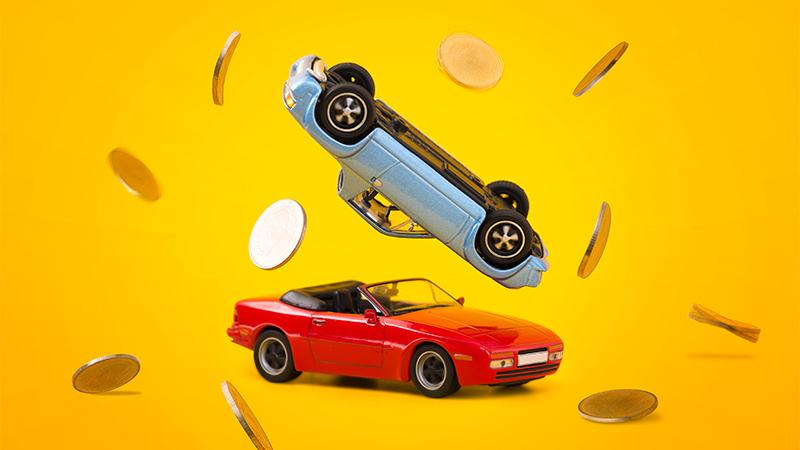When’s the last time you bought a new car? Some car connoisseurs routinely swap their functional cars for the latest model, and never complain when it comes time to make their car payments. On the other end of the spectrum are drivers who’ve had the same car for years and refuse to let it go. These drivers hold onto their vehicles until they’re old and rusted, usually either for sentimental or financial reasons.
So, which one are you?
It can be very rewarding to immediately pay off a new vehicle and maintain it to make the most of your financial investment. However, an older car can quickly turn into a money pit with all the inevitable repairs you’ll have to pay for. In this case, it might be wiser to trade in your car for a newer model. Purchasing a new car doesn’t have to blow your budget; in fact, if you take your time hunting around, you can find deals with low interest and incredible rebates that help you save money.
While many drivers form an emotional attachment to their cars, sometimes trading in your vehicle is the best course of action for both your finances and safety.
Here’s how to know it’s time to swap your ride for a newer vehicle.
- Consistent Car Trouble
Dealing with consistent car troubles can be very frustrating. An unexpectedly broken down car will make you late for work, an appointment, or other important engagements. If you find yourself routinely dealing with vehicle breakdowns, the thought of trading in your car has likely already crossed your mind.
Not only is driving an unreliable car irresponsible, but it can also be very dangerous. It’s impossible to anticipate when your vehicle will break down, and ending up stranded in an unfamiliar location or being clipped by a passing vehicle if you pull over to the side of the road can be terribly unsafe.
Sadly, once one thing goes wrong with a car, more problems tend to follow. This will not only end up wasting your money, but also your precious time and energy. New cars are generally expensive, but worth the investment in terms of safety and peace of mind. - Spending More On Repairs Than The Cost Of The Car
With any older car, there are bound to be countless repairs that you will be forced to pay for from time to time. Whether it’s a new battery, a tuneup, new tires, or something else, all of these necessary repairs are all a part of owning a pre-owned or older car.
When your bank account is drained from car repairs, it is easy to become frustrated. It’s important to keep tabs on exactly how much you dish out for car repairs, so that you can calculate if the cost is really worth it – especially if you’re making repairs on a monthly basis.
If it turns out that you’re draining your bank account with car repairs, you’ll save money in the long run if you just make the decision to upgrade your vehicle to a newer model. Also keep in mind that new cars usually come equipped with free routine maintenance checks, so if something does go wrong, the price for repairs will be covered.
- 100,000-Miles Or More? Beware
Any vehicle with more than 100,000 miles on the odometer should be driven with caution. A car with high mileage has likely lived through multiple road trips, and probably needs quite a few repairs.
While you don’t have a lease to pay off, you will probably end up paying more than you would for a lease payment in hoses, axle boots, and other repairs. Additional purchases, such as a new timing belt and water pump, will probably also need to be purchased since they tend to give out in a car that has seen better days.
In short, a car that’s driven over 100,000 miles probably won’t last much longer. Even if you choose to pay for repairs, if you are in possession of a very old car, in most cases you’re probably only extending its lifetime by a few months at most. - Low Fuel Efficiency
Today, most vehicles are manufactured to better benefit the environment. This can extend to the amount of fuel required for newer cars to run. Even cars that are only 5 years old are not up to par with the new models being released onto the market in terms of fuel efficiency.
Thanks to their outdated technology, older cars are often criticized for being gas guzzlers. As cars age, their engines begin to deteriorate and therefore use more gas – and costing you more.
Is your car over 5 years old? Research new car models to compare mileage estimates. While you may hesitate to buy a new car, you will ultimately end up paying less in lease payments than you would in repairs. - Pollution Emissions
Keeping the environment safe is everyone’s responsibility, and driving habits are a big factor. Every state has a regulatory agency that requires routine emissions testing. Your vehicle must pass this emissions test, otherwise your ride will be deemed a danger to society.
Simple problems such as a clogged air filter could cause you to fail your emissions testing. If your vehicle has failed a smog test multiple times, it’s a likely sign that there are more serious underlying problems. While this issue may be the manufacturer’s problem, chances are it’s probably due to an exhaust leak or fuel leak, which means there’s a problem with the internal engine.
High emissions aren’t just bad for the environment – they also impact the fuel efficiency and overall performance of your vehicle. Not to mention, if a gas leak does occur, it would put your life in danger. Many states will even prohibit you from driving a car that hasn’t passed an emissions test, forcing you to choose between paying a few hundred dollars in repairs or purchasing a new car altogether. - Unreliable Safety Features
Does the thought of driving scare the pants off of you? If so, then you need to repair or trade in your car for a safer one.
Faulty brake lights? You risk being rear-ended. Worn brake pads or broken seat belt? You risk being killed. “Check engine” light illuminated? Your engine could fail. If your car is currently suffering from one or more of these warnings, how will you know what to look for when an actual emergency happens?
Outdated safety features can result in injury or loss of life. Why would you ever risk causing an accident? A new car is the safest way to ensure you’re being as cautious as possible on the road, and can potentially save you thousands on car repairs, and perhaps even hospital bills. - Increasing Insurance Prices
When it comes down to it, if you have an older car, you’re going to end up paying more. This additional cost doesn’t just stop at repairs, but insurance even costs more for older vehicles that aren’t equipped with all the modern safety bells and whistles.
Make sure your vehicle has these features so that you’re not charged additional insurance fees:
– Anti-lock brakes
– Side airbags
– Daytime running lights
– Electronic stability control
– Automatic seat belts - Beat Up Interior
If you offer to be designated driver and no one takes you up on your offer, it could be time to swap your car for something new. A new car interior can add value to your vehicle as well as increasing the chance that your friends will actually want to ride with you.
Older vehicles typically tend to show their age: food and drink stains, torn upholstery, smoking damage, or any other forms of vandalization all reduce the overall value of your car by a few thousand dollars when it comes time to sell or trade your car. When a few hundred dollars for simple refurbishing repairs could put a few extra thousand dollars in your pocket, what’s there to really think about? - Rust And Signs Of Age
As unpleasant as rust is to look at, it’s actually a very important sign that there is something very wrong with your car structurally. It’s not unheard of for a rusted floorboard to fall out from under the driver entirely.
It’s recommended to start looking for a new car as soon as you spot the first bit of rust. Another sign to look out for are any unusual sounds that weren’t there when you first purchased your vehicle. If you find yourself turning up the radio in order to drown out a bizarre noise, chances are you should at least get your car checked out, if not entirely replaced. - Lifestyle Change
On occasion, a lifestyle change will mean that you will ultimately need to swap in or upgrade your car. Maybe you just welcomed a new member into your family, or you landed a new job that requires more trunk space. Regardless of the reason, there will surely come a time in your life where you will need to trade in a perfectly functional car for another model to suit your new lifestyle.
It’s Probably Time For A Vehicle Upgrade
All of the reasons listed above are excellent grounds for trading in your current vehicle for a model that is more suitable to your current lifestyle. Your overall happiness and quality of life is very much dependent on how you get around, so if your current vehicle isn’t meshing with your lifestyle, you know it’s time to spend a little to get a new ride. After all, your car should reflect and represent you.


